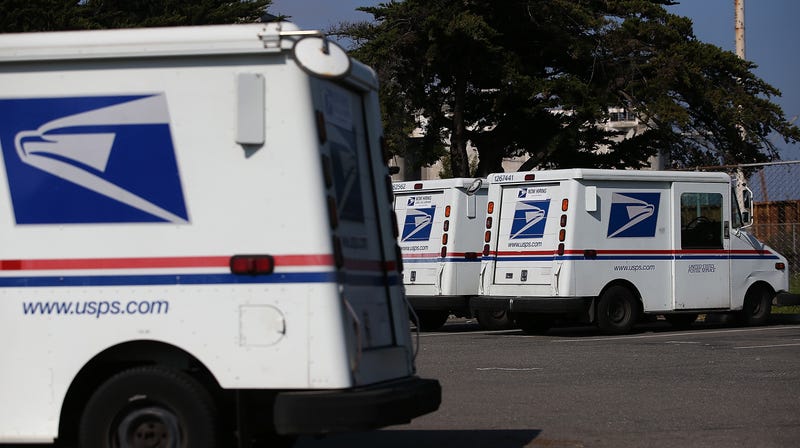 The fancy TuSimple trucks look much more high tech. Photo: Getty Images
The fancy TuSimple trucks look much more high tech. Photo: Getty Images
The famous United States Postal Service motto says, “Neither snow nor rain nor heat nor gloom of night stays these couriers from the swift completion of
their appointed rounds.” Well, that’s never been truer now that the USPS is testing self-driving trucks to deliver mail.
The USPS is partnering with San Diego-based startup TuSimple in a two-week pilot program to deliver mail between Dallas and Phoenix. The program will involve five round trips totaling over 2,100 miles, estimated at about 45 hours of driving, and will pass through major interstates spanning Arizona, New Mexico, and Texas. (Don’t worry—there will be a safety driver and engineer on board to intervene just in case shit goes haywire.)
It’s not entirely clear how much the pilot program will cost—both the USPS and TuSimple are keeping mum on the financial part of the deal. That said, a USPS spokesperson told Reuters that no tax dollars were involved and that the entire thing was funded by money earned from postage and other product sales.
That about tracks with the USPS’s financial woes. The agency reported losses every year for the past 12 years. In 2018 alone, it reported a net loss of $3.9 billion and a $2.7 billion loss in 2017. Part of the agency’s plans to claw its way back to financial health is to invest in higher-tech solutions—autonomous vehicles ranking high on the USPS’s list. As it turns out, using self-driving trucks for long hauls could reduce fuel costs, increase safety (no drivers falling asleep at the wheel), and maximize fleet utilization, if the hype is to be believed. In 2017, the agency’s Office of the Inspector General published a report on its plans to work self-driving vehicles into the USPS fleet. The USPS also mentions that it’s currently building an autonomous vehicle prototype with the University of Michigan and hopes to use it on 28,000 rural routes by 2025.
As for what TuSimple gets out of it? On top of whatever it’s making in this deal, it’s a chance to test out its computer vision system on the road. Right now, TuSimple trucks feature an eight-camera array that uses lidar and radar to see 360 degrees for 1,000 meters (3,280 feet). The startup raised $95 million in a new round of funding in February, and according to the Wall Street Journal, it is aiming to get its commercial driverless operations off the ground in late 2020 to 2021.
“Performing for the USPS on this pilot in this particular commercial corridor gives us specific use cases to help us validate our system, and expedite the technological development and commercialization progress,” Dr. Xiaodi Hou, TuSimple’s founder, said in a statement.
Meanwhile, this isn’t the USPS’s only experiment with technology. But despite the VR-themed marketing, most of its “visionary” tech is aimed at making sure packages are sorted, tracked, and delivered on time via electronic verification. (Though it does employ “174 robotics systems to move 314,000 mail trays per day.”) Oh, and I guess the USPS is also including its scratch and sniff stamps as examples of new printing technology. Sure.
Share This Story